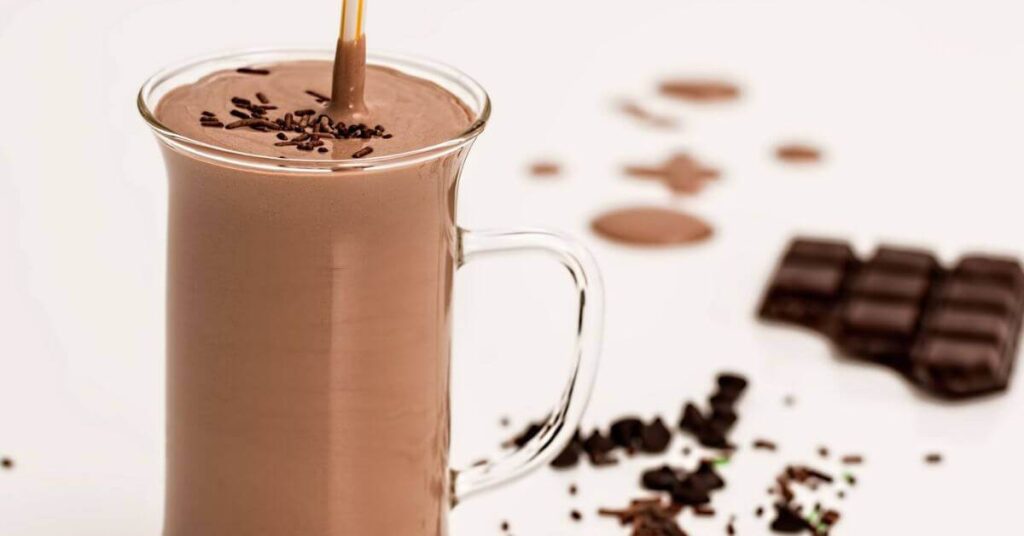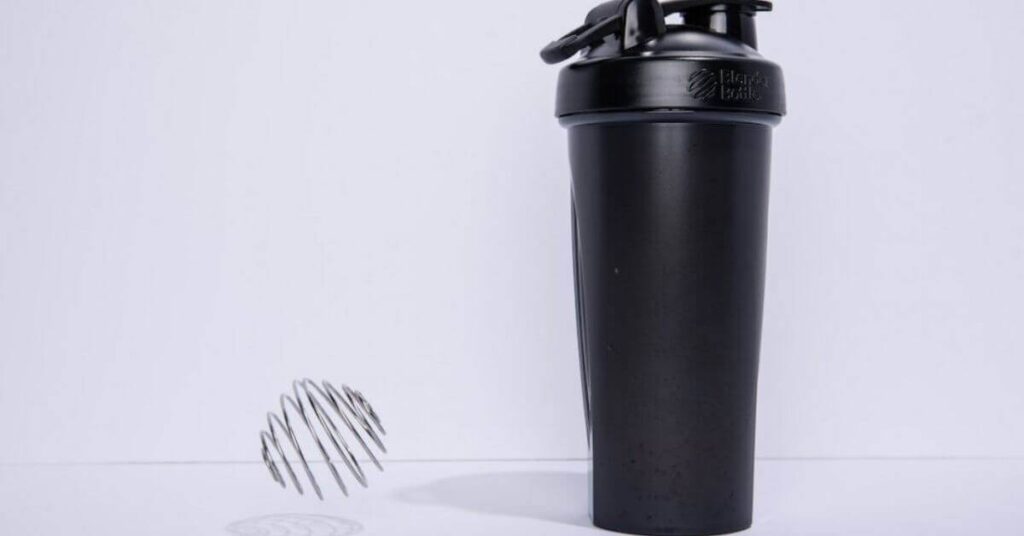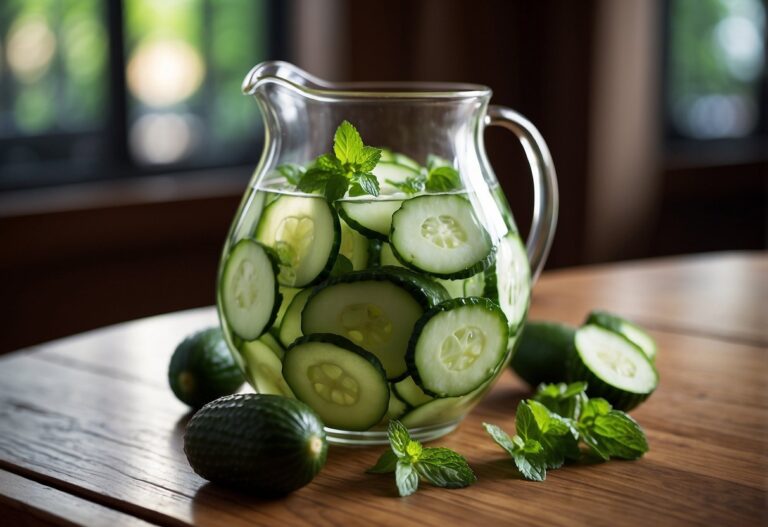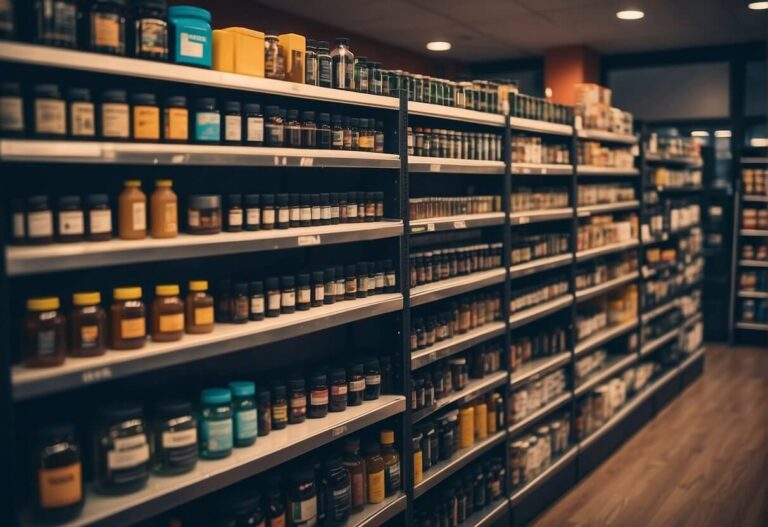If you’re reading this then you probably already know about the benefits of protein powders. Adding protein powder to your diet can help you build muscle, manage weight, and meet your nutritional needs.
Clumpy, gritty protein shakes are my biggest issue when making my shakes. If you’ve ever battled lumpiness when mixing up a post-workout drink or breakfast smoothie, this guide is here to help.
Below I’ll explain exactly why protein powder clumps up, as well as 5 tricks to mix a perfectly smooth, silky shake every time. I’ll also cover how to blend protein without a shaker bottle using basic kitchen tools. And I’ll recommend the best liquids to mix with your protein powder.
So grab your shaker and let’s go!
Exposure to moisture and incorrect storage can cause protein powders to clump. Other factors include expired powder and inadequate mixing tools.
Using an appropriate blender or shaker bottle, adding liquid before powder, incorporating ice, and pre-blending clumps can lead to a smooth consistency. Water, milk, fruit smoothies, coffee, and juice are all suitable bases to make sure you’re getting a smooth shake.
Affiliate Disclosure: Please note that some of the links on this page may be affiliate links. This means that if you click on these links and make a purchase, we may earn a small commission, at no additional cost to you. As an Amazon Associate, we earn from qualifying purchases. We only recommend products and services that we believe in and use ourselves. Your support through these links helps us keep the content coming. Thank you for your support!
Why Does Your Protein Powder Clump?
Before we look at how to make a smooth protein shake, it helps to understand what causes the clumps and grittiness of protein in the first place. Here are a few common causes:
- Moisture exposure – Any moisture that gets into your tub of protein can set off clumping. This could happen from condensation when opening and closing the container, having wet utensils that touch the powder, or high humidity.
- Old or expired protein – Protein powders can expire and degrade over time, becoming more likely to clump and get that stale texture.
- Wrong storage conditions – Storing protein powder somewhere warm or humid instead of a cool, dry place can lead to clumping.
- Using the wrong tools – Not having an effective whisk or blender can make it hard to fully incorporate protein powder into your liquid.
Now let’s have a look at some simple ways to avoid clumpy powder and get a perfectly smooth shake.
Top 5 Tricks for a Smooth Protein Shake

If you’re constantly fighting lumps and globs in your protein shakes, these tips will help you mix up smooth, creamy drinks every time.
1. Use the Right Tools
A bad workman always blames his tools. Well if you’re not using the right ones then who is really to blame??
Having the right mixing tools makes all the difference. A standard spoon or glass won’t properly incorporate the powder into the liquid. Investing in a good blender or protein shaker bottle is a game changer.
Here are some top tools for lump-free shakes:
- Shaker bottle with metal whisk ball – This simple vessel has a metal ball inside that helps break up clumps as you shake. It’s affordable, portable, and effective. Don’t be conned into buying the most expensive one because of the name on the bottle. They all do the same job and something like this one PhD Nutrition Mixball Shaker Bottle is more than good enough.
- Blender or immersion blender – Countertop blenders or handheld immersion blenders are ideal for smooth shakes. The blades fully integrate the powder into the liquid and can crush ice and blend fruit easily.
- Fork or whisk – In a pinch, using a fork or hand whisk to vigorously mix the protein and break up clumps works pretty well. You’ll need a good arm for this one!
A cheap but powerful blender is the Breville Active Blend Personal Blender and Smoothie Maker. You can read my review by clicking the link.
2. Add Powder After the Liquid
Don’t dump dry powder straight into an empty shaker or blender. The powder will stick to the bottom and sides. Instead, add your liquid first and give the container a quick shake with the lid on. This coats the container so the powder won’t stick.
Starting with liquid also gives you control over consistency. You can add powder slowly until the shake reaches your desired thickness.
3. Add Some Ice
Adding a handful of ice cubes along with your protein powder and liquid helps break up clumps in two ways:
- The motion of the ice shaking and blending helps physically break apart sticky powder globs.
- The colder temperature makes the protein particles less likely to stick together.
4. Break Up Clumps Beforehand
If your powder already has some stubborn clumps, you can take measures to break them up before adding any liquid:
- Use a fine mesh strainer to sift out clumps, letting only fine powder pass through. Discard any remaining clumps.
- Stir the powder with a fork to mash up any visible lumps before mixing your shake.
This pre-shake clump removal ensures you start with smooth powder for optimal mixing.
5. Store Powder Properly
How you store your protein powder matters. Keeping it in a cool, dry place prevents moisture exposure that can cause clumping. Make sure to re-seal the container tightly after each use.
Also, pay attention to expiration dates. Old protein powder is more likely to get that stale, clumpy texture. Either freeze powders to prolong their shelf life or buy smaller quantities you can use up quicker.
Following basic storage guidelines helps your powder stay free-flowing for smooth shakes every time.
4 Ways to Mix Protein Without a Shaker

A blender or shaker bottle may be ideal for mixing protein powder, but you can still make a smooth shake without one.
Next time you’re without your usual tools try these simple methods for lump-free protein using basic kitchen items.
Spoon, Fork or Knife
Any metal utensil can work if you have enough patience. Add your ingredients to a glass or bowl, and then vigorously stir, mash, and incorporate the protein powder to avoid clumps.
Whisk
If you have a hand whisk, use it to whip and aerate the protein powder into your liquid for a smooth, light blend.
Milk Frother
A small handheld milk frother will blend protein powders pretty well. It acts like a mini hand blender but you may struggle with plant-based protein powder like pea or soy as they’re notoriously harder to blend.
Travel Mug
Pour your ingredients into a tall, narrow travel mug. The less wide surface area will create more turbulence as you shake it. This turbulence helps fully incorporate the powder.
Or you could just do it like this….
Best Mixing Ingredients
Certain ingredients also help improve the blend-ability of protein powder:
- Milk, yoghurt, or cottage cheese – The fat and creaminess help integrate the powder smoothly.
- Kefir – Like milk and yoghurt, the creaminess helps with smooth mixing and it provides a great health boost.
- Fresh or frozen fruit – Fruit enhances flavour and incorporates easily.
- Peanut butter – A spoonful of peanut butter emulsifies well into shakes.
- Oats or granola – The texture blends smoothly and gives body.
- Seeds or nuts – Add healthy fats and crunch.
- Ice – As mentioned, ice helps break up clumps.
The Best Liquids to Mix Your Protein Powder Into
Using the right tools is important for a smooth protein shake but the liquid you dissolve into matters too.
Water may be the most obvious mixing option, but there are many possibilities when it comes to getting a smooth, lump free protein shake.
7 Liquids for Mixing With Protein Powders
Water
Good old H2O is the standard. It’s readily available, has zero calories, and lets you control your nutrition. Warmer water will help with dissolving protein powders but then who wants to drink a warm shake? Add ice afterwards to make it more enjoyable.
Milk
Milk adds extra protein, calcium, vitamins A and D, and a creamy texture. The fats and proteins in milk help the powder dissolve and improve taste.
Almond Milk
Unsweetened almond milk has a creamier consistency than water but with fewer calories than milk. Whey and casein powders mix really well with little to no effort and the end result is a creamier, milk-like shake than just using water.
Coconut Water
For a refreshing post-workout drink, coconut water offers electrolytes like potassium and magnesium. Its light, slightly sweet taste masks unflavoured powders well.
Smoothies
Adding protein powder to fruit smoothies allows you to pack in extra nutrition. The fibre, vitamins, and richness of smoothies also complement and masks the powder.
Coffee
Yes, you can add protein powder to your morning coffee. It might sound weird but blend that coffee with some ice and a scoop of chocolate protein powder and you’ve got yourself a great frappe.
Orange Juice
Fresh orange juice gives you a vitamin C boost and a bright citrus flavour. The acidity helps cut through thicker powders, and pulp-free works best for mixing. It might sound like this wouldn’t work but a scoop of vanilla protein powder really works.
Also, take a look at Can I Mix Kefir With Protein Powder? (And Why You Probably Should).
How Protein Powder Types Affect Mixing
The last thing to consider is the specific type of protein powder you are using. Here’s how the most common protein powder varieties influence smoothness:
Whey Protein
Made from milk, whey dissolves pretty easily and mixes smoothly into liquids. It’s one of the most versatile protein powders for shakes.
Casein Protein
Also dairy-based, casein is thicker than whey. It can take more effort to mix, requiring additional shaking or blending for lump-free drinks. If not blended well it can create a dry powdery mixture.
Plant-Based Proteins
In my experience, soy protein does not blend well. It makes every mixture incredibly thick and you’ll need to increase your liquid content compared to blending whey protein for example. It clumps very easily and ideally needs a blender to mix it well.
Collagen Peptides
Collagen dissolves effortlessly into both hot and cold liquids because of its fine particle size distribution. Great for smooth shakes.
Egg White Protein
Egg protein powder is notoriously difficult to blend smoothly. Foam and clumping are common issues. Mixing in slowly helps prevent clumps.
Clear Whey Isolate
The clear whey isolate from MyProtein creates a juice-like protein drink. It is best mixed with water and mixes pretty well with just a shaker bottle. Give it a minute or 2 after shaking to settle and you’re good to go!
The exact protein type you’re using affects the effort required to achieve lump-free shakes. But, combine these with the right tools and techniques, and you’ll be able to mix up smooth protein drinks with any powdery residues.
Key Takeaways
- Clumping and grittiness when mixing protein powder can result from moisture exposure, expired powder, wrong storage, and ineffective mixing tools.
- Using the right blender or shaker bottle makes a huge difference for lump-free shakes.
- Add liquid before powder and stir in some ice to help achieve a silky smooth consistency.
- Pre-blend any existing clumps and store protein powder properly to prevent moisture clumping.
- Water is the universal mixing option, but milk, fruit smoothies, coffee, and juice all make delicious protein shake bases.
- Follow these tips and you’ll be able to create smooth, delicious protein shakes every time!
FAQs
Q. How can I achieve a smooth consistency when preparing protein shakes?
A. To achieve a smooth and lump-free consistency, consider using an appropriate blender or shaker bottle. Start by adding the liquid (e.g., water, milk, juice, etc.) before adding the protein powder. Mixing in some ice can further enhance the texture. It’s also beneficial to pre-blend any existing clumps and ensure proper storage of the protein powder to prevent moisture-related clumping.
Q. Why does my protein powder sometimes clump and feel gritty when mixed?
A. Clumping and grittiness in protein shakes can result from various factors such as exposure to moisture, using expired powder, improper storage conditions, or inadequate mixing tools. These factors can impact the texture and overall quality of your shake.
Q. What if I don’t have a good blender?
A. A protein shaker, immersion blender, or even just a fork and some elbow grease gets the job done.
Q. What’s the best budget blender?
A. Look for a blender with removable, metal blades. The Breville Blend Active Personal Blender & Smoothie Maker I reviewed is a great budget option and can even crush ice.
Q. What are the recommended liquid options for making protein shakes?
A. Water is a universal option for mixing protein powder, but you can also use milk, fruit smoothies, coffee, and juice as bases for your shakes. Each of these options can provide a delicious and varied flavour profile to your protein shakes, enhancing your overall experience while following these preparation tips.







